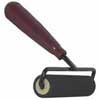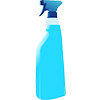-
A. Security Holograms
- A Security Holograms Overview
- A1 Stock Silver Holograms: Custom Imprinted
- A2 Stock Silver Holograms: Not Customized
- A3 Economy Holograms
- A4 Holograms For Collectibles
- A5 Stock Color Holograms: Custom Imprinted
- A6 Transparent Holograms
- A7 High Security Holograms (FIPS)
- A8 Paper Label with Hologram
- A9 Custom Hologram Design Options
- A10 Holograms with Taggants
- A11 Scratch Off Labels
- A12 Holographic Foil
- A13 California Clean Idle Label
- A14 Holographic Shrink Sleeves
- A15 Barcode Masks
- A16 Laminated Hologram Stickers
- B. Promotional Holograms
- C. Security Tape
-
D. Security Labels, Stickers
- D Security Labels, Stickers Overview
- D1 Security Labels
- D2 Non-Residue Security Labels
- D3 Pilfer Detection
- D4 TamperStrips™
- D5 Custom VOID Label
- D6 Acetate Security Labels
- D7 Frangible Paper Labels
- D8 Block Out Security Labels
- D9 Water Detection Label
- D10 Certified Cargo Screening Facility (CCSF)
- D11 Retail Gas Station Security Labels
- D12 Tamper Evident Asset Security Labels
- D13 Election Security Seals
- D14 Cannabis Packaging Labels
- E. Cargo Security Seals
- F. Computer Port Seals
- G. ID Supplies
- H. Parking Permits
- I. Security Bags
- J. Thermal Printing
- K. Laminated and Specialty Products
- L. Durable Labels
- M. Product Packaging Labels
- N. Decals
Transparent ID Card Overlays
Application Recommendations
Overlays can be applied manually without any special tools. The overlay is slightly smaller in size compared to the ID card to allow for some mis-alignment. However, it is an acquired skill to apply without trapping air bubbles, which can result in wasted overlays and wasted ID cards.
To minimize trapped air bubbles and reduce wasted materials, another option is "application fluid" and a squeegee or rubber roller.
Some overlays are designed to be tamper evident construction, i.e. the hologram will self-destruct if removed after the initial application. Using the procedure outlined below allows time for repositioning the overlay before it set in position and the tamper evident feature takes effect.
Tips:
- A typical "application fluid" is any ammonia-based window cleaner (Windex, etc.).
- A rubber roller is also called a "brayer"
- A small squeegee (or edge of credit card) are alternates tools for the rubber roller.
Procedure:
- Position the printed ID card on a flat surface in "landscape" configuration.
- Lightly spray the "application fluid" over the printed ID card.
- Remove an overlay from the film liner (backer); discard the film liner.
- Using both hands, hold the overlay from each end allowing the middle of the overlay to be at the lowest position, which will be the first point of contact with the ID card.
- Position the bottom edge of the overlay slightly above (1/16") the bottom edge of the ID card; the overlay should be placed in the middle of the card and then smoothed outward.
- After applying the overlay, use the rubber roller to smooth out any trapped air bubbles. Start in the middle of the card and work out to both edges.
- Using a soft, dry, clean cloth, wipe the finished card to remove any excess application fluid.
SUMMARY -- The application fluid and rubber roller make the affixing of overlays more fool-proof. However, after applying 20 or more overlays, an experienced person may develop the manual techniques to flawlessly apply overlays without the need for these tools.
Application Tools
 |
Typical Rubber Roller |
 |
Typical Application Fluid |



